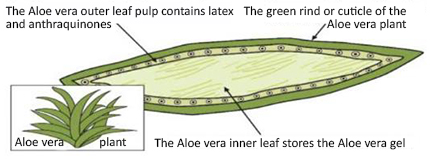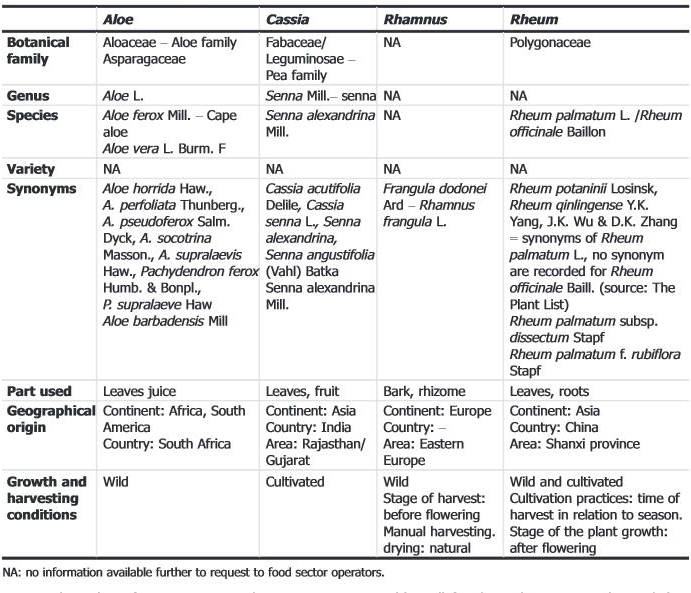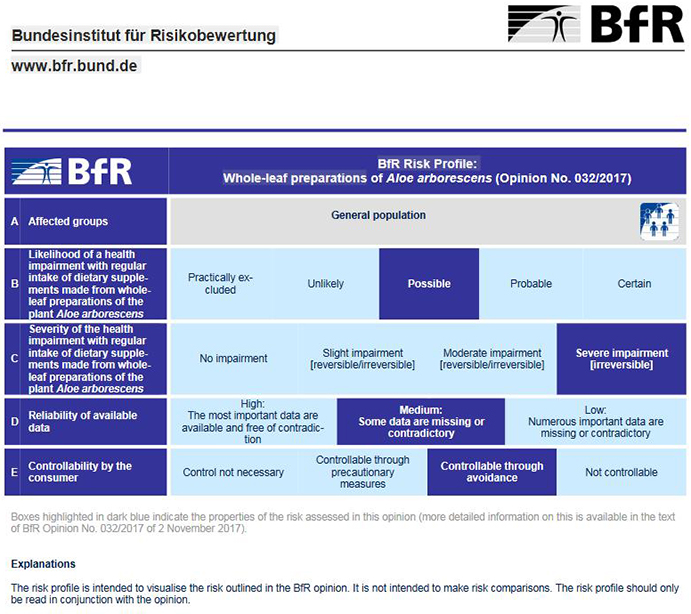IZS - Istituto Zooprofilattico Sperimentale Abruzzo e Molise
Aloe: Safety of hydroxyanthracene derivates for use in food

- Figura 1. Aloe leaf cross section. Anthraquinones are mainly located in the outer leaf pulp (from Raham et al., 2017; Copyright © 2017 by the authors, CC BY)
EFSA confirms that hydroxyanthracene derivatives in food are a health problem.
Some substances belonging to a group of plant substances known as hydroxyanthracene derivatives can damage DNA with potential carcinogenic effects.
This is what EFSA says in a scientific opinion that assessed the safety of these substances added to food.
The group of substances of the hydroxyanthracene derivatives is naturally found in plants such as some species of aloe and senna. The extracts containing them are used in food supplements for their laxative effect.
In 2013, EFSA concluded that hydroxyanthracene derivatives in food can improve intestinal function, but it has discouraged its long-term use and high-dose consumption because of potential safety issues. The European Commission subsequently asked EFSA to assess the safe use of these plant ingredients in food and to provide an opinion on the daily intake dose with no adverse health effects.
Based on the available data, EFSA today concludes that some hydroxyantracene derivatives are genotoxic (that is, they can damage DNA), even if a daily safety limit could not be established. Furthermore, in animal studies, some of these substances can cause bowel cancer (Table 1).
These conclusions are on line with previous assessments of plant sources of these substances by other European and international bodies, including the World Health Organization, the European Medicines Agency and, more recently, the German Federal Institute for risk assessment (Table 2).
The genus Aloe includes about 250 species of succulent plants that live in a dry climate (xero-phytes). The best known species is Aloe barbadensis (Aloe vera), of which the pulp of the inner leaf of has many uses in the food and cosmetic industry such as Aloe vera gel.
When producing foods with leaves of plants of the genus Aloe, the outer foliar layers containing anthranoids should be carefully removed to reduce contamination to the lowest possible levels for possible carcinogenic effects (Figure 1) .
Table 1. Information gathered from the relevant food sector operators related to the identify of the botanical sources of hydroxyanthracene derivatives

Table 2. BfR Risk Profile: Whole leaf preparations of Aloe arborescens (Opinion No. 032/2017)

Link to scientific opinion
Reference